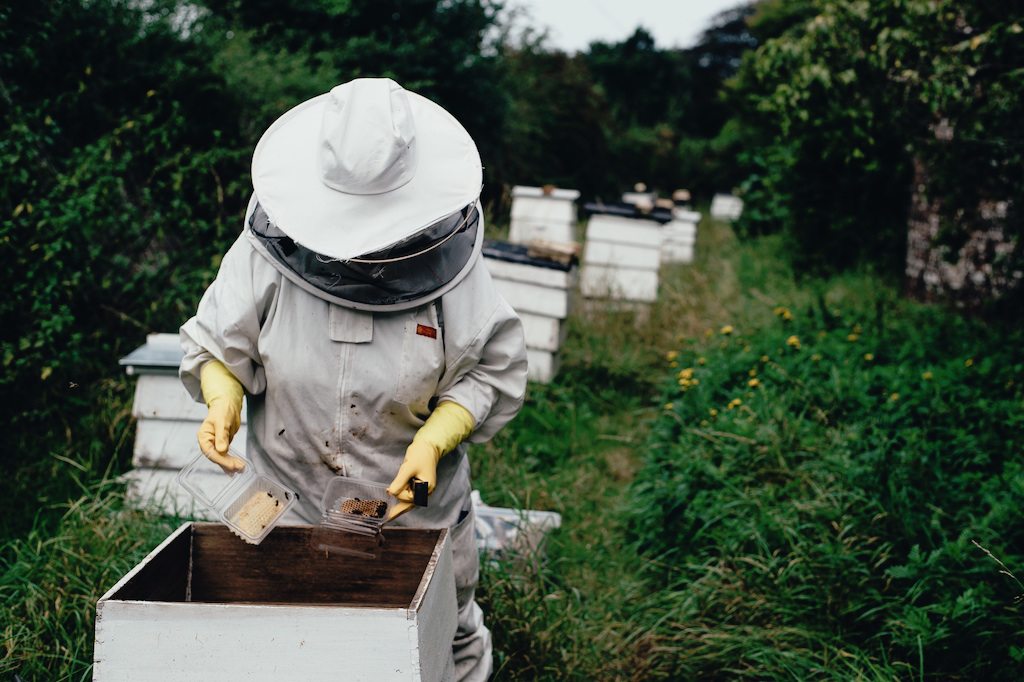
Tyler Yeo
English-language Russian news outlets are publishing high volumes of articles that portray genetically modified organisms, or GMOs, in a negative light, The Des Moines Register reported Sunday. In 2016, Russian news outlets RT and Sputnik published more articles that mentioned GMOs than the Huffington Post, Fox News, CNN, and Breitbart News combined.
The findings come from two Iowa State University researchers, biologist Carolyn Lawrence-Dill and sociologist Shawn Dorius. They are the result of a new study that is currently under review. Though it is somewhat atypical to share research results before they are published, Lawrence-Dill and Dorius have been discussing their findings at conferences and, now, with journalists (Science magazine has a good explainer on the peer review process here). “We are probably, Sean and I both, are stupidly letting people know what’s going on here because it’s really clear that it’s a real signal and we don’t think that waiting makes much sense where there is some threat,” Lawrence-Dill says. “So as academics it’s a little bit dangerous for us.” She says their research has been funded exclusively by the university.
According to a draft version of the study shared with The New Food Economy, Lawrence-Dill and Dorius found that news coverage of GMOs in English-language Russian outlets “fits the profile of the Russian information warfare strategy described in recent military reports.” That means Russian coverage consistently played on vulnerabilities in the American GMO discussion. And unlike United States-based coverage, which was mixed on pro- or anti-GMO stance, Russian coverage was almost unanimously anti-GMO. In fact, many of the GMO mentions in Russian outlets appeared in stories that were only tangentially related (or completely unrelated) to agriculture and genetic engineering. For instance, a story about Zika virus-infected fetuses included a link that enticed readers to “READ MORE: GMO mosquitoes could be cause of Zika outbreak, critics say.” The researchers categorized those tangential mentions as “click bait.”
It’s important to note that, for the purposes of this study, “GMO” doesn’t actually have any scientific meaning. It’s often used in reporting as a catch-all term that describes any product of genetic engineering, and the researchers argue that the term’s vagueness actually contributes to the tension it stokes. “It calls up all kinds of different perspectives into one glob,” Lawrence-Dill says. She’s referring to the fact that people object to GMOs for all kinds of different reasons—perceived moral ambiguity of genetic manipulation, concerns about pesticide and chemical use, skepticism of regulatory bodies, objection to the business practices of the biotech companies that make and sell GMO products, health concerns—and those very different viewpoints tend to get lumped under one “anti-GMO” umbrella.
What separates a Russian influence campaign from a series of mentions in a couple hundred articles? Researcher Dorius says the study grew out of media reports of a broader Russian interference campaign in the 2016 elections. They were already looking at science narratives in the media, and they wanted to get a sense of which outlets drove the conversation surrounding GMOs. They found that RT and Sputnik combined published more than half the articles that mentioned genetically modified organisms in 2016.
Let’s assume for a minute that Russia did run a coordinated campaign to discredit GMOs in the English-language press (and we’re not really there yet—remember, the research is unpublished, and we don’t have a sense of how many people actually read the articles referenced in the study. Dorius says they’ll work on analyzing reach next.) What’s the motivation?
One explanation, which fits quite neatly into the “information warfare” narrative, is that Russians see GMOs as a “wedge issue” that can be used to exacerbate existing divides amongst American news consumers. They wouldn’t be wrong. There’s plenty of evidence that GMOs constitute a wedge issue with or without Russian interference—myriad interest groups publishing under neutral-sounding names like the Genetic Literacy Project already publish pro-GMO content nearly every day. And every time The New Food Economy so much as mentions “genetic engineering” in an article, we hear a lot of noise from both sides of the aisle. Russia is not the first entity to be accused of using bad-faith tactics to sway the public debate around genetic engineering; Monsanto was accused of employing an online troll army in an April 2017 lawsuit. (Russia and Monsanto are on opposite sides of the issue.)
But if Russia simply wanted to amplify GMOs as a divisive issue, wouldn’t it publish articles from multiple perspectives that attack the opposite side? Dorius says that seems to be the playbook it has employed with other wedges including Black Lives Matter and, more recently, gun violence. “In fact, this GMO stuff is kind of interesting because, with some of these issues, there might be an attempt to present both sides. What we found is what we would call bias in a descriptive way. And by that we mean the articles just overwhelmingly portray GMOs in a negative light. And they don’t provide any kind of counter-arguments.”
There’s another reason Russia may be interested in sowing doubt about GMOs: The country doesn’t grow any. “Some of the reports that we cite describe oil and agriculture as the two top industries in Russia,” Lawrence-Dill says. “If you look at quotes from what Putin is saying about clean food, clean agriculture, it’s pretty clear that it would be to their benefit.” Putin may be able to brand Russian agricultural products as GMO-free, but they are GMO-free only by default.
If Russia is able to effectively discredit the U.S. biotechnology industry—an industry which has considerable public relations problems already—it may open up new global markets for Russian exports.
“Biotechnology is an area of real global—not just strength, but global dominance for the U.S.,” Dorius says. “So it’s an important area for Russia as it relates to basic kinds of food security and national security issues for both countries.”
Dorius says influence campaigns typically don’t sway people whose opinions on wedge issues are set in stone. But for the roughly 30 percent of people who Dorius estimates haven’t made up their minds about GMOs, seeing them persistently associated with negative ideas may be effective in changing their minds. That’s why the “click bait’ tactic of plugging GMO content into tangentially related articles can be particularly impactful.
“It kind of cements two ideas together,” Dorius says. “So those kind of latent associations that people have and that can be formed—those are really, really, really powerful. And particularly powerful if they’re tied to images.” When common underlying GMO-related anxieties are triggered, the mental impact is all the more potent. “You may not know anything about GMOS, but if you’re a person who was really skeptical about scientists monkeying with nature, then you’re susceptible to having a negative impression.”
It remains to be seen whether or not the RT and Sputnik stories were read by more people than the CNN, Fox News, and Breitbart stories, or what kind of social media reach these outlets really have.
Until they get to that next phase of research, Lawrence-Dill says she and Dorius are working on developing a class for Iowa State students that focuses on media literacy. “We’re putting together a course that is on that topic—of trying to get large volumes of students to develop those kinds of critical thinking skills,” she says.
With their help, perhaps the next generation will be able to have the kind of measured, nuanced discussion on genetic modification and its impact on agriculture that is nearly extinct these days.










